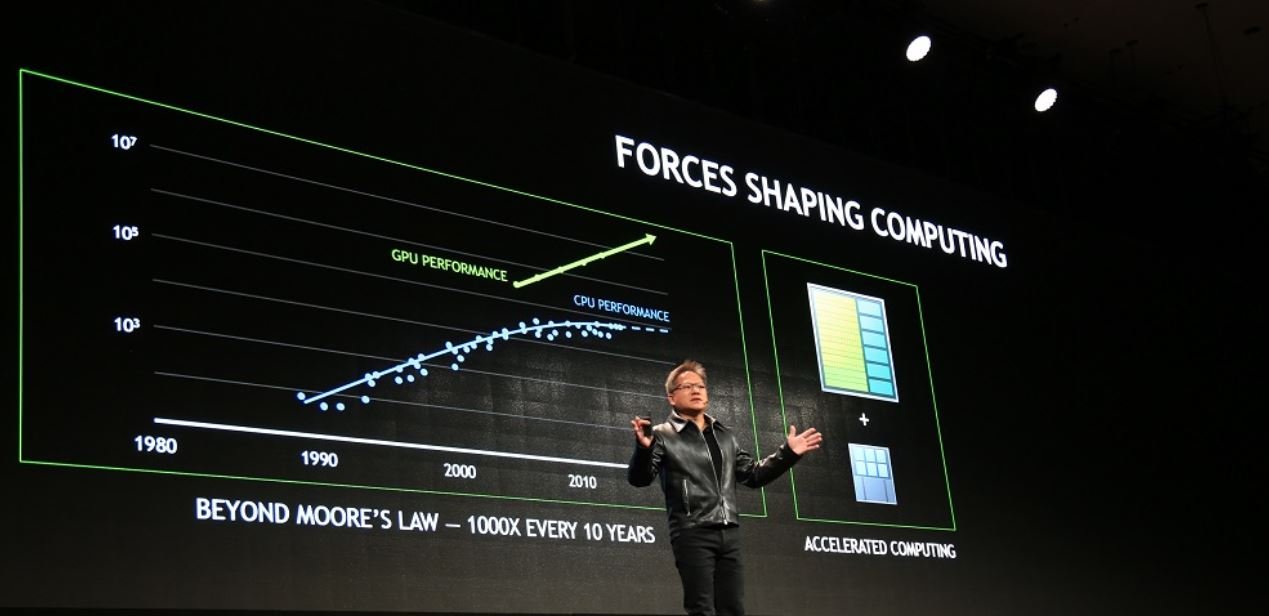
Volvo finds new, highly automated driving functions at low cost
For the last decades, the computing power of chips has been doubling every 18 to 24 months. It’s the fundament of Moore’s Law, and up to now, it has never been proven wrong. Still, the debate about how long Moore’s Law will be effective has been around since it was described for the first time. Always smaller, always faster, this has to stop sometime, doesn’t it? Well, not up to now. But what if computing power wouldn’t stop doubling because of the limits of technology, but would be accelerating up to 1,000 times, would that also mean the end of Moore’s Law? In any case, it’s far beyond it, NVIDIA CEO Jensen Huang thinks. And apart from that, it would be great news for industries that need superfast computing power – like that of autonomous cars.
Huang used the GPU Technology Conference in Munich to present Rapids, an open-source software that aims to accelerate computing processes extremely. Tests have shown that graphics processing units (GPUs) equipped with Rapids are 50 times faster than conventional computer processors (CPUs). But for Huang, this would be just the start.
Huang: “Big data analysis or learning from intelligent machines are the most important areas for high-performance computers. The world’s largest companies run algorithms on large server farms to recognize complicated patterns in huge data clusters and make predictions that directly determine their future business and profits. With Rapid, we will make decisive progress in these areas.” Based on this technology, Huang plans to multiply the computing power of computers by a thousand over the next 10 years.
Xavier for the automotive industry
Huang didn’t leave it to mere speculation about the performance of the new system. He also presented the new system to customers such as Volvo. From 2020, the Swedish carmaker plans to use the Drive AGX Xavier computer from NVIDIA, which uses Rapid technology. Xavier should enable new, highly automated driving functions at low cost. Special challenges in the development of completely autonomous vehicles are above all the recognition of the environment as well as the coordination of the traffic situation, the driving wishes of the passengers and current driving dynamics. Decisions have to be made within fractions of a second and the vehicle has to be steered accordingly. According to Huang, other automotive companies such as Continental, Veoneer or Zenuity also rely on Xavier.
NVIDIA’s supercomputer already on the road
To prove that NVIDIA can not only provide the computing power but also understand something from the user side, Huang showed a video of a completely autonomous vehicle. Controlled by the company’s own supercomputer, which, compared to Xavier, provides many times the computing power, the vehicle turned 80 accident-free kilometres in the dense traffic of Silicon Valey, including driving in and out as well as changing lanes on the highway.
